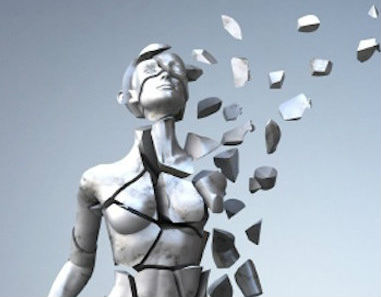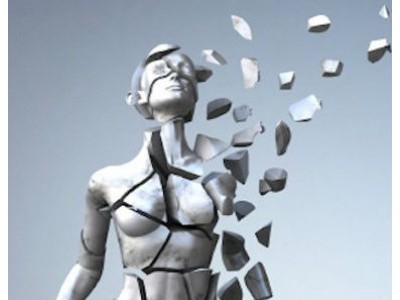 We have for you two news. Let’s start with a good one: people on our planet began to live longer! And now the bad news: just because people began to live longer, the diseases of the elderly began to come to the fore. After all, in old age, we now live 20-30 years, or even all 40, if we behave well. One of the factors that increase mortality and significantly reduces the quality of life is osteoporosis. Those who know what a fracture is, understand what discomfort and limitations this event imposes. Those who do not know, it’s wonderful! Read on, what to do to never find out.
We have for you two news. Let’s start with a good one: people on our planet began to live longer! And now the bad news: just because people began to live longer, the diseases of the elderly began to come to the fore. After all, in old age, we now live 20-30 years, or even all 40, if we behave well. One of the factors that increase mortality and significantly reduces the quality of life is osteoporosis. Those who know what a fracture is, understand what discomfort and limitations this event imposes. Those who do not know, it’s wonderful! Read on, what to do to never find out.
Osteoporosis is a systemic disease of the skeleton, accompanied by a decrease in bone density. As a result of reducing bone formation and strengthening the processes of bone destruction, their structure is disrupted, and our skeleton becomes very brittle. Compression fracture of the spine is the most common complication of osteoporosis. As a result of reducing the density of bone tissue, the vertebrae are "dyed". The distance between them is broken, the spine is bent. This leads to the loss of nerve roots and severe chronic pain.
Fracture of the hip is another frequent and rather dangerous complication. So in the elderly, within 3 months after the fracture of the hip, mortality increases in more than 2 times! In general, the world community of endocrinologists gives special attention to this problem. And now again good news! We can influence these processes; the main thing is to start at the time. In our body there is a constant process of renewal of cells and tissues, including bones. This is necessary to adapt to changing environmental conditions.
So, somewhere the pressure increased, the load increased which means that in this place the bone should be stronger so that it does not break. Osteoblasts respond to this process, cells that create a new bone matrix in the right places, which is then mineralized by calcium and phosphorus. And in some place you can take a little calcium from the old bone tissue for the needs of the body, for active muscle work, for example. There are already included other cells - osteoclasts. They excrete special enzymes, which lead to resorption of calcium salts and release it into the blood.
At what age is the bone stronger? In youth, the processes of bone tissue synthesis prevail up to 18-20 years. We actively gain bone mass. That is why at this age it is so important to consume more foods rich in calcium, to engage in physical activity. By 18-20 years we reach the peak of our bone mass. Then, to 35-45 years, the process of bone remodeling works as a well-functioning mechanism, supporting the uniform creation of new and destruction of old bone tissue. But after 45 years for unknown reasons, the process of bone destruction begins to prevail. In women, it becomes especially active after menopause, when estrogens cease to be produced, keeping the density of bone tissue at the required level. Between 13 and 18% of women aged 50 years and older have osteoporosis and 37 to 50% have low bone mass. In men, the predominance of bone destruction begins later and is more often provoked by poor habits, metabolic diseases and insufficient physical activity.
What causes a decrease in bone density?
- Lifestyle;
- Insufficient physical activity;
- Because of hypodynamia, blood supply to the muscles and bones worsens. Plus, there is no the same environmental impact that is necessary to maintain adequate remodeling processes;
- Excess consumption of coffee (more than 10-12 cups a day);
- Alcohol abuse;
- Smoking;
These factors lead to a decrease in the absorption of calcium from the intestine.
- Metabolic changes in obesity affect virtually all systems of the body. Including, and on the skeleton;
- Deficiency of body weight;
Osteoporosis in this case will be a consequence of the general inadequate intake of vitamins and microelements necessary for the normal mineralization of bone.
Hormonal disorders:
- Menopause, especially menopause before 45 years;
- Removal of the uterus with the ovaries, especially before 45 years;
- Low testosterone levels in men;
- Elevated levels of parathyroid hormone;
- Thyrotoxicosis (elevated levels of T4 and T3, and low TSH levels);
- Increased level of cortisol (hypercortisy);
- Oral glucocorticosteroids. They are used for autoimmune diseases: rheumatoid arthritis, systemic connective tissue diseases, severe bronchial asthma and so on);
- Antiandrogen therapy with GnRH agonists;
- Heparin;
- Cyclosporin;
Conditions that lead to a decrease in calcium absorption from the intestine:
- Vitamin D deficiency;
- Gastrectomy or gastrectomy;
- Resection of the intestine;
- Celiac disease;
- Malabsorption;
- Idiopathic hypercalciuria;
- Myeloma;
- Chronic renal failure.
Of particular importance is the vitamin D deficiency, primarily due to inadequate formation of it in the skin with insufficient exposure to the sun. It has been established that the additional administration of calcium preparations with vitamin D reduces the number of fractures, especially in elderly people. At the same time, it is not completely understood whether this is due to an increase in the mineral density of bone tissue or to an improvement in the conduction of a nerve impulse, and hence coordination of movements, which reduces the likelihood of a fall.
Treatment of osteoporosis includes several means:
- Bisphosphonates, denosumab - aimed at reducing the destruction of bones;
- Vitamin D - helps the absorption of calcium and its entry into the bone;
- Calcium preparations - the replacement of calcium deficiency with insufficient intake of it with food.
- Raloxifene (Evista), teriparatide - are prescribed individually, are serious drugs and stimulate the formation of bones.
The exact treatment scheme depending on the degree of damage to the bones will be picked up by your doctor (endocrinologist, rheumatologist). It is very important to adhere to the treatment scheme, because if it is violated, the effectiveness of this expensive therapy is significantly reduced.
The main point in the prevention of osteoporosis is the adequate intake of calcium and vitamins in the body, as well as the physical activity necessary to maintain good blood supply to the bones and normal remodeling processes.
Daily Ways to avoid Osteoporosis:
- Vitamin D - at least 400 IU of vitamin D should be ingested per day
- Calcium - in a day you need to consume 1000-1200 mg of calcium with food.
- Physical activity - at least 30 minutes of moderate physical activity per day (walking, climbing and descending stairs, charging).
- And of course, timely medical examination.



